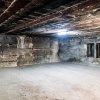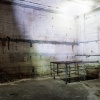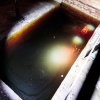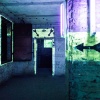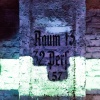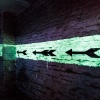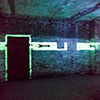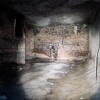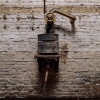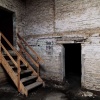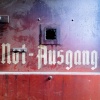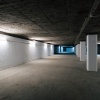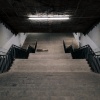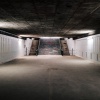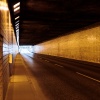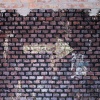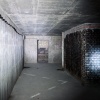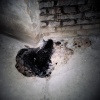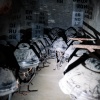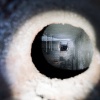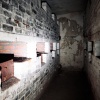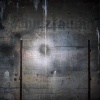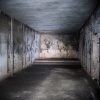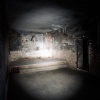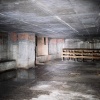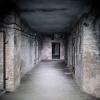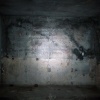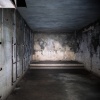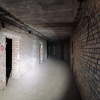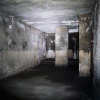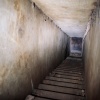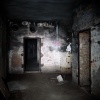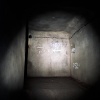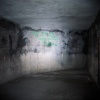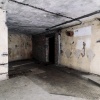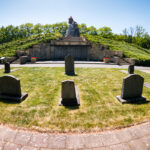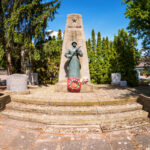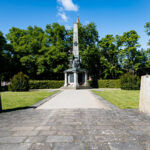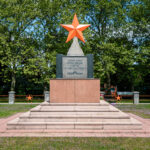Berlin, bombs and bunkers – In the underground of Alexanderplatz and Moritzplatz
Berlin has a worldwide unique history since all hot conflicts one the one hand, as well as the Cold War on the other hand, left its traces behind in the city. Shortly before World War I Berlin saw a its most profound changes. The city grew and had to update its infrastructure to meet the increase in population plus being technically en vouge in terms of transportation. Witness of both turning points, of wars and growth, is the underground of two Berlin squares, that is Alexanderplatz in Mitte and Moritzplatz in Kreuzberg.
The Moritzplatz ghost station
Originally it was planned to run an S-Bahn connection leading under Berlin’s Oranienstraße to connect the once important terminal stations of Berlin-Dresden rail with Berlin-Görlitz route. Those terminal stations Dresdner Bahnhof and Görlitzer Bahnhof still can be found in Berlin, as reminiscence or even station of the U1 line. The real Görlitzer Bahnhof was once a building standing on where today globalisation delights us with drug dealing and its crime, that is Görlitzer Park.
When standing on U8 station platform one has absolutely no idea that right under one’s feet a ghost station being made of two concrete rail troughs is “slumbering” deeply. Basically the ghost station is an advance construction meant to make one of Berlin’s busiest places and intersections becoming even more busy, that was, back in time, Moritzplatz. Yet today visible Draeger company made ventilation system also tells the fact, that already before World War II the Moritzplatz station was destined to be an air-raid shelter. Shelter in that context meant protection from gas, a dread arisen from World War I. The large round gas filter cartridge of the Draeger devices still tell that story. In World War II that advance construction was used as shelter to protect exactly from that what US Americans can do to perfection even today: throwing bombs.
Despite Nazi Germany being pushed back significantly onto actual German territory back in 1945, western allies were deliberately and systematically targeting civilians by dropping firebombs of worst make and effect. Such a firestorm hit Berlin only very locally, but people based in Hamburg as well as Pforzheim and Dresden think a lot different about that sort of warfare. The longest bomb attack on Berlin lasted 56 minutes.
The bomb shelter is the unfinished lower part of Moritzplatz, that was planned as interchange station. Without additional light it’s pitch-black down there. Walking around a little while and switching off lights then one can witness a remnant of war times, that is signposting arrows, room labels and fluorescent colour that still glooms like 70 years ago. Generally the Moritzplatz ghost station is in a bad condition. Ingress of water is omnipresent, the masonry becomes more and more instable and soon the ghost station will be filled up and be history as well.
The bunker face of Alexanderplatz
Under Berlin’s Alexanderplatz another, more spacious bomb shelter can be found. It is located under the block of buildings formed by Otto-Braun-Straße, Karl-Marx-Allee and Mollstraße. When entering that bunker one can witness a “remnant” of Cold War: the former pedestrian underpass.
Back in “bad” socialist times pedestrians were much more appreciated, respected and could access the city on foot. Today we may struggle with a traffic approaching us with a four-wheeled “Fuck off! Here I come” mentality and may only walk if traffic signals are green. What is sort of funny since Berlin Senate means to administer traffic signals better than the manufacturer. Berlin’s delusions of grandeur being out of touch with reality currently culminates in the BER airport disaster.
All in all the Alexanderplatz bomb shelter is designed to protect much more people than its Moritzplatz sibling. Though, latter one was much more stable, what a more or less direct hit of an explosive bomb gave once proof of. Such a detonation, or a direct hit would have turned the Alexanderplatz shelter into a death trap as its ceiling isn’t thick at all.
Every now and then there’s a buzzing audible in the bunker. On the one hand that’s emerging from trucks using the nearby car tunnel under Alexanderplatz, but also tunnel and rails of U8 line are everything but far away. Inside the shelter there’s actually only one original inscription left. In one of the rooms, its walls are spangled with countless brackets for folding beds, a yellowed sign says “Schutzraum” and another one (potentially) “No open fire”.
In one of the Alexanderplatz shelter cellars the old gas lanterns of Berlin are stored. In another room only strange metal drawers and brick-built holes can be seen. That’s the end of the air filtering system, that was operated using sand. The “fresh” air then flowed through holes in the side walls ventilating all other rooms.
At the end of a dormitory one can still see the stubs of former sanitary facilities. Hence fresh air was literally not only needed in terms of oxygen supply. Today everything looks interesting and exciting, but forced to live in such bomb shelters was definitely no fun at all. Against that knowledge and Berlin’s own experiences, it’s entirely incomprehensible that Germany trigger-happily exports arm as well as tangles with its neighbours at others’ behest.

